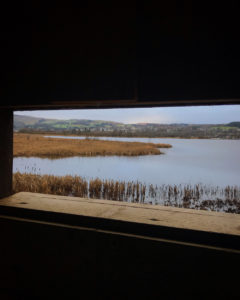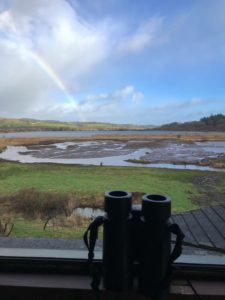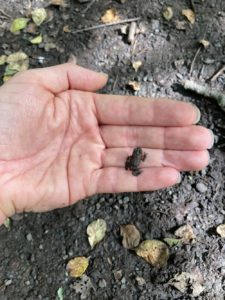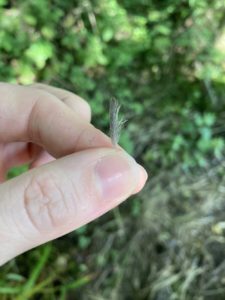Every year, we give over all of December (and usually most of January) to a series called ‘Shadows and Reflections’, in which our contributors share highs, lows and oddments from the past 12 months. Today it’s the turn of Blue Kirkhope.
I want to have things as multiply and intricately as possible present and visible in my mind. Then I might be able to sit on the hill by the burnt books where the starlings fly over, and see not only the starlings, the grass field, the quarried rock, the viney woods, Hollins pond, and the mountains beyond, but also, and simultaneously, feathers’ barbs, springtails in the soil, crystal in rock, chloroplasts streaming, rotifers pulsing, and the shape of the air in the pines. — Annie Dillard, Pilgrim at Tinker Creek

My year commenced with whooper swans in the sky. The flash of their pronounced yellow beaks and their distinctive honking call directed me towards them as I scanned the horizon over the Aird Meadow Loch with my binoculars. And then there were the greylag geese, another of the honking variety. A cacophony of winter visitors, and very noisy ones at that.
I have been volunteering at the RSPB’s Lochwinnoch Nature Reserve most Saturdays this year. My knowledge of birds, habitats, and other wildlife was minimal before I began working here. In fact, thanks to members of staff, I very quickly learned I had been pronouncing ‘whooper’ wrong this whole time (for those who don’t know, it is a silent “w”). A beautiful thing, to learn from your mistakes. Throughout those first couple of winter months of volunteering, I often came across great crested grebes, cormorants, goldcrests, coots, goosanders, tufted ducks, goldeneye, and teal. One day, as I was strolling along the trail next to the Barr Loch, I could see hundreds of lapwings ascending into the sky, the collective noun of which I learned is a ‘deceit’. Some days there were many visitors to the reserve, and on other days there weren’t many at all. Some days there was rain, and on other days there were rainbows. On one occasion a violent storm caused large tree branches to fall across the reserve’s trails overnight, and after clearing them to ensure visitors were able to access the path networks, I hunkered down in the bird hide alongside my colleague with a hot flask of green tea and we waited for the rain to pass as a moorhen darted amongst the reeds upon the loch, not bothered by the rain at all.

As the end of March approached, winter concluded with a very surprise guest to the reserve. My colleague and I were beckoned into the bird hide by a visitor one mild sunny afternoon. They had their telescope set up and ready, and as we all took turns looking through the viewfinder, we finally spotted them — a drake smew and its redheaded female companion, visiting our little reserve 30 minutes outside of Glasgow, all the way from Russia or Scandinavia. As the UK winter population of smew is usually around 125 birds, we were incredibly fortunate to witness those two basking on the loch that day.
Spring arrived, and daffodils slowly replaced the snowdrops on the reserve. I had become accustomed to the reserve in its winter attire; the ice-cold hues, the lack of leaves on the trees, and the winter migratory species passing through. Now I had to get to know it in another light. I had heard murmurs at the visitor center of the elusive nuthatch at the feeding station, so one Saturday morning I went down to take a look. The feeding station along the Aird Meadow Trail is where you will find most of the garden birds; bluetits, chaffinches, robins, blackbirds, turtle doves, and, if you are lucky, our resident great spotted woodpecker which you can often hear before you can see it. I sat on the ground beneath the feeders and waited patiently. And after about 10 minutes or so I saw the nuthatch — identified by its long beak, orange breast, blue-grey feathers, and the distinct black stripe across its eyes — and it began toing and froing between the feeders for sunflower hearts, before bolting straight back into the trees. A first for me, and I see it often now.
The reserve slowly began to burst at the seams. Canada goose goslings appeared on the scrapes, there were rumours of tawny owls nesting in the owl box, and the reserve warden found a green warbler’s nest. Wild garlic and bluebells had sprouted everywhere. Swifts appeared in the sky. And with the changing seasons came an apparent shift in my knowledge. I began speaking more confidently with visitors about bird species. I learned a lot from some of them, and some of them even learned something from me. Alongside other colleagues, we began hosting pond-dipping sessions with families and young children where we discovered midge larvae, bloodworms, freshwater shrimp, and daphnia — all signs of a healthy little pond ecosystem. On some occasions, I helped the assistant warden with practical jobs around the reserve. I was in my element.
During one of the pond dipping sessions, a volunteer with a keen interest in moths had set up a moth trap behind the reserve and began collating each individual species into tiny plastic containers for inspection. Moths have been my worst fear since I was a child, and the children accompanying us on that particular day were far braver than I was as they excitedly emptied the containers and the sleepy moths woke from their slumber and began crawling and fluttering in their hands. With a sudden wave of courage, I decided perhaps now was the time to face that fear. Heart racing, I scooped up the tiniest moth I could find and it lay very delicately on my forefinger. I have now grown to admire their beauty.
Then, summer was here. I left my waterproofs at home for the first time. I downloaded a plant identification app on my phone. Fluffy fledglings had begun making an appearance and wildflowers and dragonflies emerged in their abundance. I found myself looking beyond the birds and began crawling on the ground and wandering off the trail, taking photos of every plant I could find and submitting them into the app for identification, writing a list of their names in the notes on my phone, and reciting them under my breath:
Red campion
Meadowsweet
Cow parsley
Nipplewort
Marsh valerian
Horsetail
Selfheal
Comfrey
Then, a sudden movement on the ground caught my eye. I stopped in my tracks and, upon closer inspection, found a tiny toadlet on an expedition from one side of the trail to the other. And once I saw one, I saw several, leaping here, there, and everywhere. Now my eyesight had adapted to their visibility, camouflaged perfectly against the grey gravel, I began very hesitantly picking them up one by one, guiding them to safety and away from the possibility of being squashed underfoot or wheel. This became a routine aspect of my Saturdays and my heroic duty this summer: saving the baby toads.

As autumn came and everything began to decay, my dear grampa passed away. Overwhelmed with grief and family tensions, I didn’t return to the reserve for a month or so. And I found myself missing it. But in its absence I also noticed I was seeing my surroundings in a new light, noticing things more, knowing things more. With my grampa’s flask filled with whisky, I took myself on the early morning sleeper train to Rannoch to walk 13 miles to Glencoe across the boggy moor. My nana and grampa had lived in the little white cottage beyond the train station and worked in the pub there many years ago, so that place was dear to me, to them, and it seemed an apt way to say goodbye to him in my own way. As I walked through the woodland and across Rannoch Moor I could feel that I was tuned into things in a different way, far more intimately than ever before.
It’s December now, and back to winter again. I returned to Lochwinnoch last week to find cracked and empty snail shells and half-eaten crab apples strewn across the trail where the thrushes and the blackbirds have been dining. Everything, from the fungi on the tree trunks to the expansive bodies of water, was frozen, and the clouds fell upon the Barr Loch. The notes on my phone are now full of all of the lists of the birds I’ve seen this year. On this particular day: fieldfare, goosanders, song thrush, cormorant, blackbirds, robins, wrens, mute swans, tufted ducks, dunnock, bullfinches, chaffinches, a heron in a tree. This experience has taught me to sharpen my gaze; to broaden my perspective of nature by zooming in closer.

*
Blue Kirkhope is a writer, walker and birdwatcher from Glasgow whose work focuses on community, the environment, sustainability and nature connectedness. You can follow her on Twitter and Instagram.
You can visit the RSPB Lochwinnoch website here.